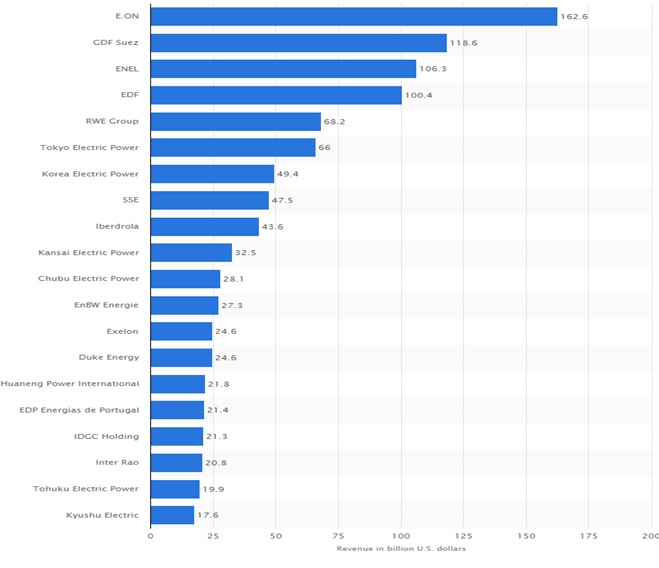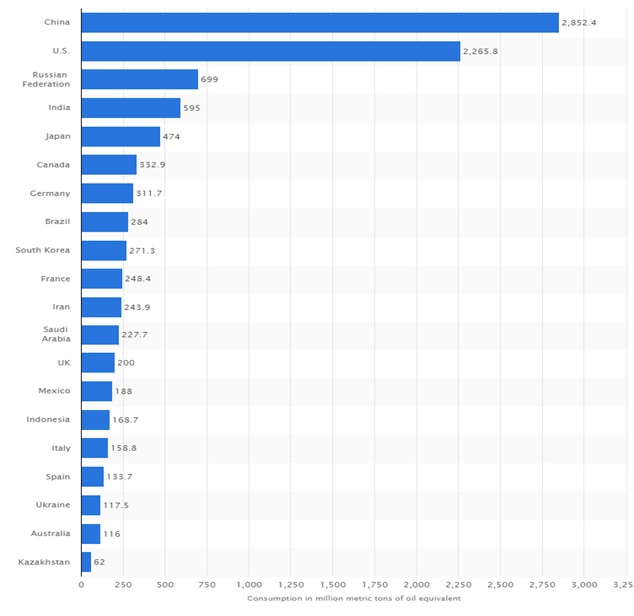- April 20, 2015
- Posted by: Wevio
- Category: Market Research & Analysis, Wevio Blog

Commercially-produced energy is derived from fossil, nuclear and renewable sources.

Nuclear and fossil fuels – such as coal, natural gas and oil – are supplied by the mining industries, while renewable energy is generated in small or large-scale systems with the help of turbines, pumps, collectors or photovoltaic modules. The main electricity sources comprise nuclear fuels, coal and natural gas, as well as solar, wind, biomass and hydropower sources.
Electricity is generated in private or state-run electric utilities. The world’s largest electric utilities include Duke Energy, GDF Suez, Iberdrola and E.ON.
The world’s largest electric utilities in 2013, based on sales (in billion U.S. dollars)* 
According to the demand of energy, it can be broken down into the following sectors:
- Industrial
- Transportation
- Residential
- Electric power
- Commercial
Approximately 40 percent of global power consumption is accounted for by the industrial sector.
The transportation sector uses petroleum products, biodiesel and natural gas.
The power sector uses these and other fuels to generate electricity, which is the main source of energy in the residential and commercial sectors.
Top 20 countries in primary energy consumption in 2013 (in million metric tons of oil equivalent*) 
Please follow us for more articles related to energy & environmental industries
https://www.facebook.com/Wevio
http://wevio.tumblr.com/
https://www.linkedin.com/company/wevio
